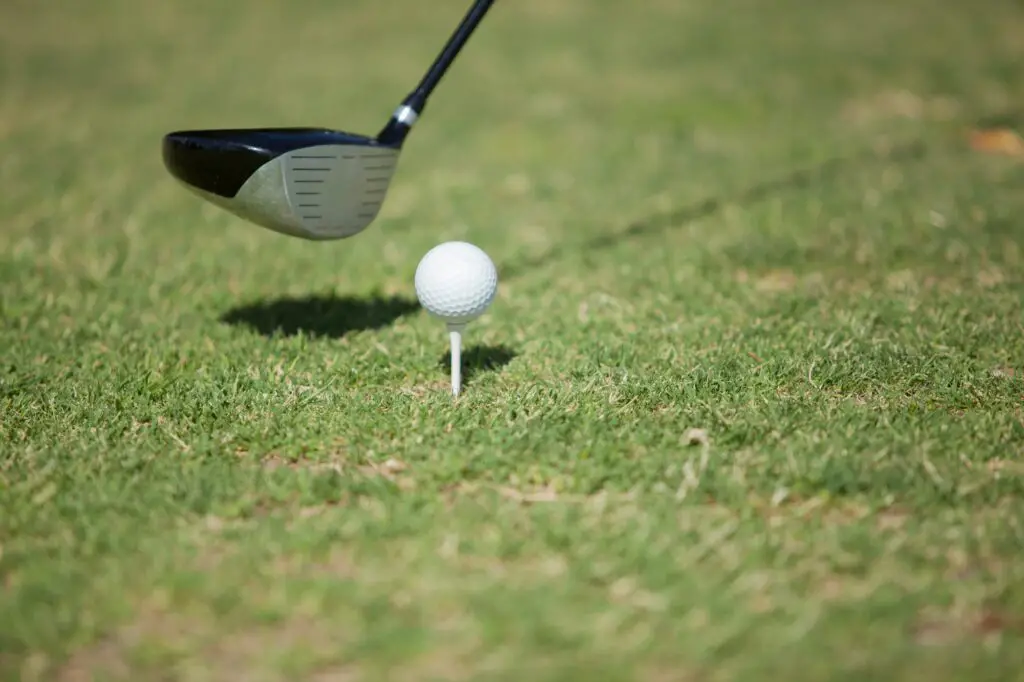Last Updated on October 23, 2023
Do you yearn to advance your golfing expertise? If so, then understanding offset on a golf club is essential. For those looking to take their game to the next level, understanding offset on a golf club is essential – and though it may seem daunting at first, its implications are relatively straightforward. In this blog post we’ll explore what is offset on a golf club and the pros and cons of its design – so if you’re ready to learn how off-setting your clubs might help (or hinder) your performance, read on.
Table of Contents:
- What is Offset in Golf?
- Benefits of Offset Design
- Drawbacks of Offset Design
- FAQs in Relation to What is Offset on a Golf Club
- Conclusion
What is Offset in Golf?
Offset in golf is a design feature of the clubhead which affects the ball flight. It refers to how far back from the centerline of the shaft that the leading edge of a golf club’s head is positioned. This offset helps players to square up their clubs at impact and also adds some extra forgiveness on off-centre hits.
An offset design can help players who tend to hit shots with an open face or slice their shots due to an outside-in swing path by helping them close down the face at impact more easily. This will result in straighter shots with less sidespin and, therefore, better accuracy overall. Additionally, it increases MOI (Moment Of Inertia), which leads to increased stability on off-centre hits for greater forgiveness as well as providing more consistent launch conditions across all types of strikes.
Offset in golf is a design feature that helps players control their shots and achieve more consistent results. By understanding the benefits of an offset design, you can better determine if this type of club will be beneficial to your game.
Benefits of Offset Design
One of the main benefits of offset clubs is that they help improve ball flight control. By utilizing an offset club, golfers can feel more secure when hitting off the tee as their shot will likely travel farther than if they had used a typical club without any offsets. As well as this, having an offset club gives players more confidence when teeing off because they know their shot will travel further than if they had used a standard model without any offsetting.

The most noticeable benefit of using an offset-designed golf club has got to be its ability to reduce slice and hook spin on mis-hits. If you’re prone to slicing or hooking shots, then investing in some new equipment could be just what you need; by using an off-set driver or iron set, this type of spin should significantly decrease as long as the correct technique is maintained throughout each swing motion.
Finally, many people find that playing with an off-set design allows them greater control over their game due to its increased forgiveness capabilities compared to traditional models. Even if there is not quite enough power behind a stroke – due perhaps too much loft being applied – chances are still good that whatever direction was initially intended will still occur thanks largely to how far back from the centre point this particular piece of equipment sits within one’s grip.
Drawbacks of Offset Design
Offset design is a popular choice among golfers, as it can help to reduce the slice in your swing. Still, prior to acquiring an offset club, it’s wise to be mindful of some potential disadvantages.
First and foremost, offset clubs tend to have less control than their non-offset counterparts. Shots may not fly with the same accuracy or regularity as desired when using an offset club. Additionally, if your game requires precision over distance, then an offset club may not be the best option for you.
Another potential downside of using an offset club is its slower speed off the tee box compared to other designs due to its increased mass at the impact point, which makes it harder for golfers to generate maximum power on their drives without sacrificing accuracy and control. This could lead to fewer yards gained from each shot taken with an offset driver when compared with a standard model.
Finally, many players find that they struggle more with their short game when using an offset design because they don’t feel comfortable controlling their ball flight around the green since they’re used to having less control over their shots while playing with this type of club head shape.
FAQs in Relation to What is Offset on a Golf Club
What is the offset of a golf club?
The angle between the front edge of the base and the centerline axis of the shaft is known as offset in a golf club. A golfer’s individual choice can determine the offset angle, which usually falls somewhere between 0 and 4 degrees. A positive offset means that when you address your ball, it appears slightly behind where it would if there was no offset; this helps promote more loft at impact for higher launch angles and greater accuracy. Conversely, a negative offset promotes less loft with lower launch angles for increased control.
What is the purpose of offset in golf irons?
Offset in golf irons is a design feature that helps to promote straighter, more accurate shots. It works by pushing the leading edge of the clubface away from the golfer’s hands at impact, which can help reduce slicing and increase accuracy. Offset also reduces shaft lean at address, helping to create a squarer face angle for better contact with the ball. By reducing twisting on mis-hits, offset increases forgiveness as well as improving distance control and accuracy overall.
How does offset affect ball flight?
Offset describes the alignment of the clubface to a line extending from the shaft’s midpoint. When offset is present, it causes an angle between these two lines that can have a dramatic effect on ball flight. The more offset there is, the greater this angle will be and consequently, a higher trajectory with less spin and draw bias will result. Conversely, if there is little or no offset, then you may experience lower trajectories with more spin and fade bias. Ultimately, offset can have a significant impact on ball flight and should be taken into consideration when selecting clubs.
Conclusion
In conclusion, offset on a golf club is an important design feature that can help improve accuracy and distance. While the benefits of this design are clear, it’s important to consider any drawbacks before investing in clubs with an offset head. Ultimately, understanding how offset works and its pros and cons will help you make more informed decisions when selecting your next set of clubs.



